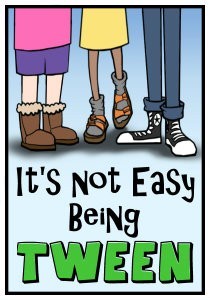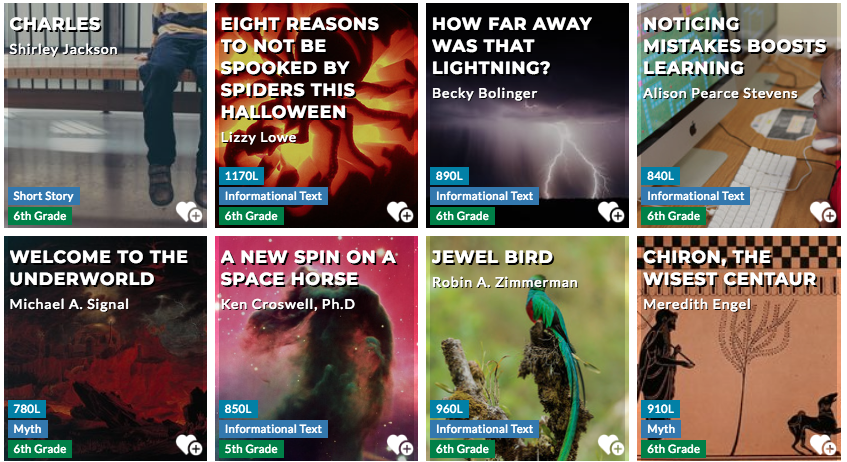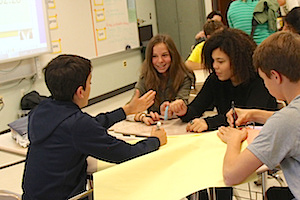We Can Do Lots More for Students with Dyslexia
A MiddleWeb Blog

It broke my heart to see students with so much potential become disenfranchised and grow to hate school. No matter how hard they tried, they were seldom successful in their general education classes.
I became a teacher consultant who worked with general education teachers to help support the myriad needs of students in their classrooms. My focus was not on implementing a specific technique to help an individual student, but instead working to ensure we developed practices that made it possible for all students in a class to be successful.
This post is about helping students with dyslexia to be successful in their core academic classes. The bonus? These techniques will benefit ALL students in the class, whether or not they have a diagnosis. It’s a win-win strategy.
I’ve loosely grouped the ideas into four categories: Teaching Tools, Instructional Techniques, Assessing Understanding, and Emotional Support.
Teaching Tools
Visual Support. Including photos, pictures, picture books, and videos in your teaching toolbox provides students with reading challenges an additional source of context with which to understand a concept.

Assistive Technology. There are more methods of assistive technology than I could possibly list here, and the list increases and changes all the time. A quick internet search should help you find many options. The major categories are text-to-speech software and speech recognition software. Your school may already have access to these tools.
Graphic Organizers and Reading Guides. As the content expert, I know the key ideas that I need students to understand in their reading. By designing an outline in a student-friendly, visual format, I find they are better able to locate the important information and organize it for comprehension. (Example)
Better Notes. During direct instruction, use skeleton or guided notes. Leave blanks for the key vocabulary words and highlight these in the lecture slides or materials. Alternatively, rather than expecting students to try to listen and write, I provide a copy of the notes, and we work together as a class to read and make meaning of them. This helps them review the material independently as well.

CommonLit grades 5 and 6 readings
Adapted Texts. Newsela, Tween Tribune, and CommonLit are examples of websites that provide different versions of texts adapted to different readers. Caveat: I never do anything that involves assigning a reading level label to a student. Instead, I provide multiple texts on the same subject written at different levels to avoid stigmatizing a child.
White Space. One bad habit of many teachers is to design materials with far too much text on a page. I know it saves paper and ink to provide handouts filled edge to edge, but it is overwhelming to the reader. Visual breaks and white space help students understand the material better because they can maintain their focus.
Instructional Techniques
Review Time. Though my classroom time is limited, and I am tempted to fill every moment with instruction, it is far more beneficial to my students to revisit material regularly.
Pre-Teach. Prior to reading a text, front-load key concepts and specific vocabulary related to the topic. Also lead a discussion to discern what your students already know about the subject and supplement with appropriate contextual information.

Improve Instructions. Provide both verbal and written instructions as well as a backup plan in case students need clarification and you are not available. My students all have a study buddy they can call or text, and we also utilize an intranet where our assignments are posted to students who need a backup to what they may have in their planner. I also highlight key words/tasks required to successfully complete the work.
Chunk the Material. Whether it is the steps of a large project or essay or a long reading assignment, break it into component parts that are each manageable at one sitting – and then check in regularly.
Peer Work. Getting a group to work together productively takes practice (here’s one idea), but once those conditions are put in place, middle school students find the opportunity to learn with and from their peers as beneficial as from an adult.

Vocabulary Games. Learning academic and topic-specific vocabulary can be challenging to students with reading difficulties. Whenever possible, utilize group vocabulary games such as categories, charades, and Pictionary to reinforce the meaning of the words.
Assessing Understanding
Ideas, Not Mechanics. A student’s ideas should be the primary component of their grade and not the grammar or spelling involved.
Alternative Representations. Allow alternatives to solely written assignments. Digital storytelling software and multi-modal representations of information help students share their knowledge without being held back by reading difficulties.
Writing Supports. One of my favorite ways to help students achieve writing success is to provide sentence starters or paragraph frames to help them organize and express their thoughts.
Emotional Support
Strengths-Based Approach. Students with dyslexia are often highly intelligent with a lot to offer, and these strengths are not seen enough because they are held back by traditional constraints. However, there are so many gifts associated with dyslexia that it is a shame and disservice not to capitalize on them.
For example, one fun way to practice reading is via lateral thinking puzzles. I show a brain teaser on the whiteboard and turn them loose. My students who learn differently tend to be incredibly strong in critical thinking, and I love seeing them shine.

Normalize Differences. What makes us different makes us strong. Make sure to share successes of people (here are some) who may have been written off due to their differing ability being seen as a deficit. In my English classroom, my classroom library contains books with students who have dyslexia such as the Percy Jackson books and Fish in a Tree by Lynda Mullaly Hunt.
Maintain a Helpful Attitude. Too often, well-meaning adults overtly or subtly express their belief that if the child just worked harder, she would be successful. They write the student off as lazy or unmotivated, and this is simply not the case. Many students are spending hours on schoolwork with little to show for it. In addition, some adults see assistive technology such as audiobooks as “cheating,” and nothing could be further from the truth. Students are simply using what they need to be successful, and we all deserve that opportunity.
Add Free Resources to Your Collection
There are many wonderful organizations that provide free resources for teachers who want to support all of their students. Among my favorites are Dyslexia International, LDA (Learning Disabilities Association of America), and LD Online.
After a while it becomes second nature to make these adjustments in the classroom. It’s worth making the change to help all students succeed.
































I love this article, very practical tools which I can share with my 13 year old’s teacher.
Thanks for sharing your experiences……..
I have benefited a lot from this article, thanks a lot.
Great ideas! I would add, “Have good lighting or an open seat near the window” and, “Encourage the student to know their limitations and tell you when they need a brain break.”
Good article! Strategies and tools which can be utilized to accommodate and differentiate for diverse learners. Thank you!
Clear and concise! Lots of great ideas!
Great article